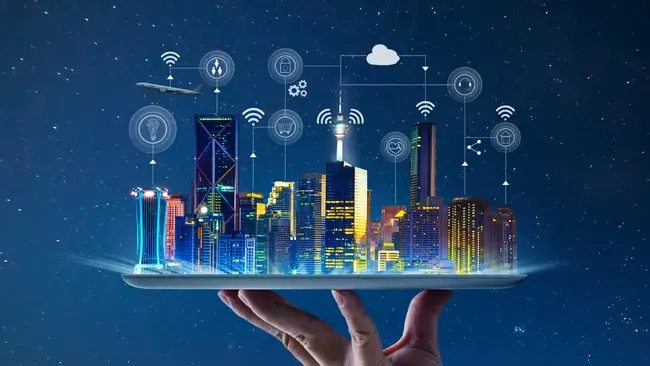As the growth of urbanisation spurs a worldwide interest in smart cities, geospatial data is playing a critical role in smart, data-driven urban planning.
A smart city refers to an urban area that leverages modern technology – in particular information and communication technologies – to implement sustainable solutions that address the challenges associated with urbanisation.
These solutions include improving waste management, traffic congestion and air quality. By gathering and analysing various data points, smart cities can optimise their infrastructure and services to better serve their residents.
Of all the technologies driving this data-fuelled urban evolution, geospatial data is having one of the greatest impacts on work, life and transport in the city.
From feature identification and image classification to object tracking and LiDAR annotation, geospatial data powers the deployed technology based on geographically referenced information, providing a detailed map of the environment in which the technology is operating.

Driving automation with Dynamic Geospatial Data and AI
Geospatial data uses data from a wide range of sources such as satellite imagery, aerial photography, maps, GPS data, and survey data.
With the increasing availability of embedded sensors, satellites, and mobile devices, the amount of data available to engineers is only expected to grow.
Meanwhile, recent advances in cloud computing, AI and machine learning are enabling cities to process vast amounts of geospatial data, providing unprecedented opportunities to build smarter cityscapes.
#Leafmap tutorial 74: Downloading maps tiles from a Tile Map Server (TMS) and Creating a GeoTIFF file with one line of code.
— Qiusheng Wu (@giswqs) April 18, 2023
Notebook: https://t.co/pAIbYWjsg0#geospatial #mapping #geopython pic.twitter.com/41HpSqkAN3
By collecting real-time inputs from various sensors, dynamic geospatial data can be used to power autonomous tech and smart city projects. This data can be used to generate valuable insights, identify patterns, and make data-driven decisions that benefit citizens.
For instance, geospatial data can be used to create accurate and real-time maps of traffic patterns. This enables city planners to optimise road networks and reduce congestion, while identifying the most efficient routes for reducing travel times.
Cities will be able to know and predict when there’s a spike in pedestrian traffic, the best time for collection, the flow of traffic congestion, and the impact of events on city life.
To read more about making data-driven decisions, visit our dedicated Data Management Page.
Some may even be able to introduce automated transportation systems using this data. Strides have been made toward introducing automated transportation with several smart cities around the world introducing driverless taxis, metros and even buses powered by companies like Waymo, Zoox and Cruise.
Public Safety Driven by Data
Geospatial data is not only critical to transforming city infrastructure. It is also proving pivotal in building safer cities by enabling city planners and law enforcement agencies to make more informed decisions and take timely action to prevent crime and respond to emergencies.
By monitoring crime hotspots and using predictive analytics, for instance, city officials have been able to deploy resources where they are most needed to prevent crime.
Meanwhile, with data on air and water quality, city planners can take action to reduce pollution levels and improve the health of citizens.
In recent years, geospatial data has also been used to improve emergency response times, providing digital maps of the location of hospitals, fire stations, and other critical infrastructure so that first responders can be directed to the scene of an emergency quickly and efficiently.
It has also proven extremely effective for disaster management, mapping out areas prone to natural disasters such as floods, earthquakes, or wildfires. This data can help city planners to develop evacuation plans and allocate resources to areas that are most at risk.







Comments ( 2 )
Stephen Watson
21/04/2023
Matt Harris
20/04/2023